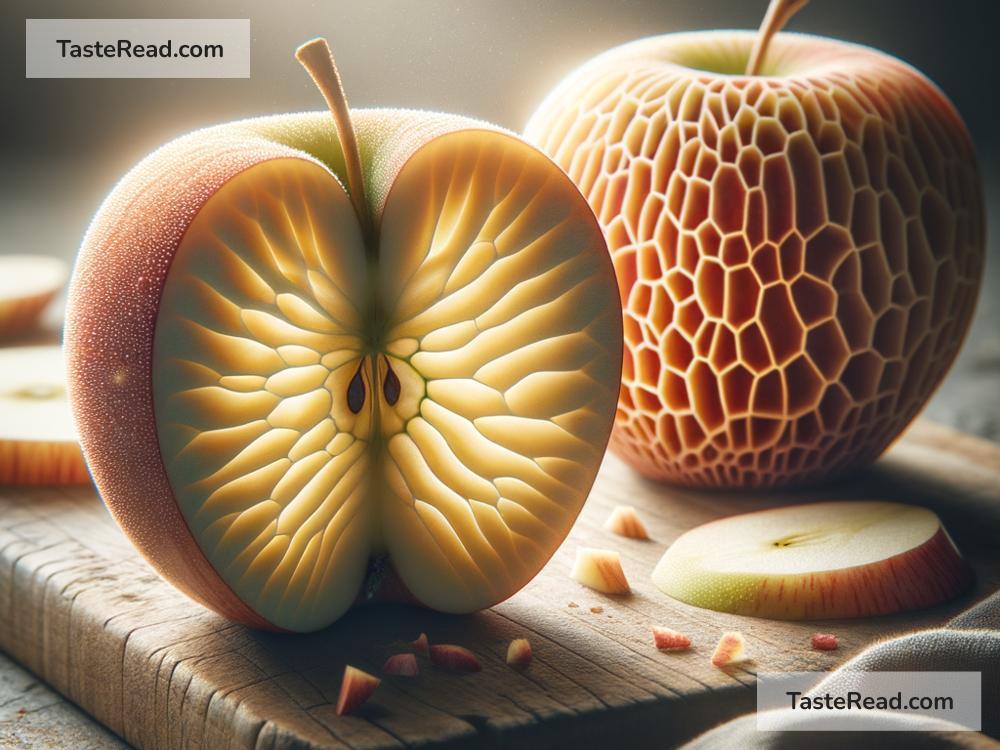How Cellular Structure Determines the Crunchiness of Apples
There’s something truly satisfying about biting into a crunchy apple. That crisp sound and snap as your teeth sink in make apples one of nature’s most perfect snacks. But have you ever wondered why certain apples are crunchier than others? The secret lies in their cellular structure. Understanding this can help us appreciate why different apple varieties feel different when we bite into them and why they’re so enjoyable to eat.
Let’s take a journey inside an apple to understand how its cellular makeup impacts its crunch nature — in simple terms!
Apples Are Made of Tiny Building Blocks
Like all living things, apples are made up of cells. Think of cells as tiny building blocks. The cells in an apple determine its firmness, juiciness, and crunchiness. Each cell is surrounded by a cell wall, which acts like a sturdy protective shell. These cell walls are made of substances like cellulose, pectin, and hemicellulose — materials that either keep an apple firm or make it softer, depending on their structure.
When you bite into an apple, your teeth break through its cell walls, and the juice inside the cells is released. That’s where the crunch and burst of flavor come from — essentially, you’re “popping” apple cells with every bite.
What Makes Cells in Apples Crunchy?
The crunchiness of an apple comes down to the strength and size of its cells. Crunchy apples have cells that are:
1. Strong and Sturdy
The cell walls in crunchy apples are firm and thick. This means that it takes more effort for your teeth to break through them, resulting in that satisfying crunch. If an apple has weaker or thinner cell walls, it will feel soft and mushy, rather than crisp.
2. Full of Water
Crunchy apples tend to have cells filled with water. Water pressure inside the cells pushes against the cell walls, keeping them firm and creating a “snap” when the walls break. This water pressure is known as turgor pressure, and it’s an important factor in making apples crunchy.
If an apple loses water over time, its turgor pressure decreases. The cells become shriveled, and the apple feels softer — it’s less crunchy and more mealy. That’s why fresh apples from the tree are usually crunchier than older ones.
3. Smaller in Size
Research has shown that apples with smaller cells tend to be crunchier. This is because smaller cells create more cell walls in every bite, resulting in a firmer texture overall. Larger cells mean there are fewer walls to break, which can make the apple feel less crisp.
Variety Matters: Not All Apples Are Crunchy
Ever noticed how a Honeycrisp apple feels completely different compared to a Red Delicious? This isn’t just about flavor — it’s largely about cellular structure! Certain apple varieties are bred and grown to have firmer, crunchier textures, while others are softer and less crisp.
Let’s look at a few examples:
-
Honeycrisp: Known for their extra crunch, Honeycrisp apples have small cells with thick walls and high turgor pressure. Each bite releases a burst of juice, making them incredibly satisfying.
-
Red Delicious: While sweet, Red Delicious apples are not as crunchy because their cells are larger and their walls are thinner. They often have a softer texture when compared to Honeycrisp or Granny Smith apples.
-
Granny Smith: These tart apples are also known for their crunchiness, thanks to their strong cell walls and abundant water content. They’re often used in baking because their texture holds up better in recipes.
What Happens When Apples Get Soft?
Over time, apples naturally lose water, and their cells become less firm. If you leave an apple sitting out for days or weeks, the water inside its cells gradually evaporates, lowering the turgor pressure, and the cell walls break down slightly. This leads to a softer, mealy texture.
Other factors, like bruising or improper storage, can also change the cellular structure of an apple and make it less crunchy. To keep apples fresh and crisp for as long as possible, store them in a cool place, like the refrigerator.
Why Crunchiness Matters
Crunchiness isn’t just about texture — it affects how we experience an apple’s flavor. When an apple is crunchy, its cell walls release juice more quickly, creating a burst of flavor in your mouth. Softer apples don’t provide the same vibrant flavor experience because their juice is released more slowly.
That’s why people tend to prefer crunchier apples for snacking — they’re fresher, more flavorful, and more enjoyable to eat.
Conclusion
A crunchy apple is the result of a delicate balance in its cellular structure. Strong cell walls, high water content, and small cells all combine to give you that crisp snap and juicy burst when you bite into your favorite apple. From Honeycrisp to Granny Smith, apple varieties differ in crunchiness because of their unique cellular makeup.
So next time you bite into an apple, take a moment to appreciate the science behind its satisfying crunch. It’s nature’s way of delivering both texture and flavor in one delicious package!


